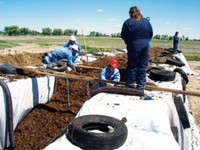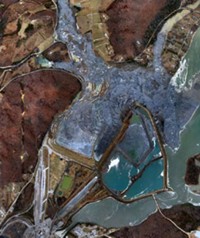Advertisement
Grab your lab coat. Let's get started
Welcome!
Welcome!
Create an account below to get 6 C&EN articles per month, receive newsletters and more - all free.
It seems this is your first time logging in online. Please enter the following information to continue.
As an ACS member you automatically get access to this site. All we need is few more details to create your reading experience.
Not you? Sign in with a different account.
Not you? Sign in with a different account.
ERROR 1
ERROR 1
ERROR 2
ERROR 2
ERROR 2
ERROR 2
ERROR 2
Password and Confirm password must match.
If you have an ACS member number, please enter it here so we can link this account to your membership. (optional)
ERROR 2
ACS values your privacy. By submitting your information, you are gaining access to C&EN and subscribing to our weekly newsletter. We use the information you provide to make your reading experience better, and we will never sell your data to third party members.
Environment
Composting Could Offer Low-Cost Way To Dispose Of Disease-Causing Prions
Public Health: In a preliminary study, composting inactivates prion proteins that cause neurological diseases in people and livestock
by Deirdre Lockwood
May 23, 2014

In the 1980s, a fatal neurodegenerative disease in cattle broke out in the U.K. and began spreading in Europe and North America. Some people who ate beef from the ranches that raised the sick cows came down with a similar disorder. The diseases, bovine spongiform encephalopathy (BSE) in cows and variant Creutzfeldt-Jakob disease in people, are caused by misfolded versions of proteins called prions. Scientists think that when the people ate the beef, the cows’ misfolded prions triggered their own prions to fold incorrectly, causing the illness.
Agricultural regulations have since been strengthened to keep the recalcitrant proteins, which aren’t inactivated by cooking, out of the food and animal feed supply. In North America and Europe, government regulations mandate or recommend costly disposal practices, such as incineration or rendering, for animal remains thought to be contaminated with misfolded prions. Now Canadian researchers have found a simpler, less expensive method to get rid of this waste: throw it in the compost heap (Environ. Sci. Technol. 2014, DOI: 10.1021/es500916v).
Tim A. McAllister of Agriculture and Agri-Food Canada and his colleagues were inspired by research from others showing that microbial enzymes often found in compost can degrade the stubborn misfolded prions. To determine whether composting would be an effective disposal method, he and his colleagues tested it on prions responsible for three different neurodegenerative diseases: BSE, scrapie in sheep and goats, and chronic wasting disease in deer and elk.
They inoculated 1-g pellets of manure with one type of prion, put the pellets in mesh bags, and added them to 40-L drums in the laboratory containing a compost of cattle manure and wood shavings. In a larger field experiment, they introduced stainless steel pellets coated with scrapie prions into 100-ton piles of the compost.
The lab experiments ran for about a month, while the one in the field lasted seven. During that time, the team collected the mesh bags from the lab experiment at various intervals and analyzed the prions using two assays to measure the degree of prion misfolding, which is an indicator of the protein’s ability to infect. To test infectivity in the field experiment, they injected prions collected from compost pile into the brains of hamsters and monitored them for neurological disease.
The laboratory composting inactivated 90% of the infectious prions for BSE, 99% of those for scrapie, and 99.9% of those for chronic wasting disease.
One in five hamsters injected with prions from the field compost heap contracted scrapie, representing a 99.999% reduction in prion infectivity compared with a control treatment. McAllister points out that the normal exposure route—an animal eating contaminated material—transmits the disease much less effectively than introducing prions directly into the brain, as the team did in this study.
The greater efficiency of degradation in the field compost could be due to the higher temperature and microbial activity in those piles compared to that in the lab drums, McAllister says.
Joel A. Pedersen, an environmental chemist who studies prion disposal at the University of Wisconsin, Madison, says the results are an important step in assessing composting as a solution for prion disposal. Although the approach is economically attractive, he says more study is needed to understand the composting conditions necessary to adequately inactivate the proteins.





Join the conversation
Contact the reporter
Submit a Letter to the Editor for publication
Engage with us on Twitter